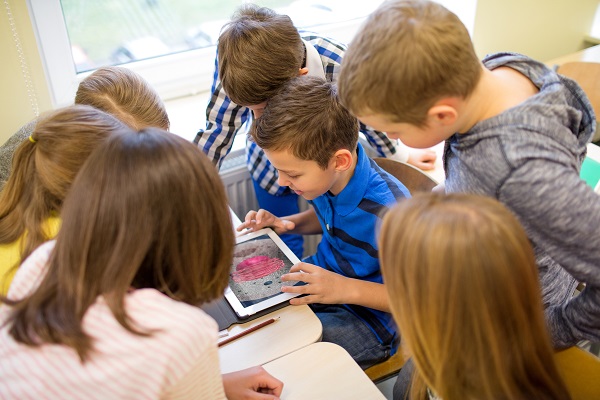In a recent webinar, “Media Roundtable: State of the Education Beat”, four seasoned education-industry editors hashed out the big issues confronting today’s educational press in the Covid era. These respected editors weighed in on the role of journalism in a pandemic, the kinds of stories that are currently on journalists’radars, and how vendors/manufacturers can obtain better press coverage. This live session featured these panelists:

- Scott Jaschik, the CEO and Editor at Inside Higher Ed
- Kanoe Namahoe, the Editorial Director for Education and Business Services at SmartBrief
- Wayne D’Orio, a freelancer, editor and writer
- Kara Arundel, a K-12 Education reporter at Industry Dive
The first question offered to the panel was “how did the pandemic affect the educational press’s ability to pursue stories?” Although nothing was said about the loss of advertising revenues from businesses that cater to the ed market, most of the panelists felt that, at least as far as reporting, things were quite busy and easily accomplished.
All interviews were done on Zoom, at home. And since sources were always at home during the Rona, interviewees were very easy to reach. Besides the strain in general of dealing with the personal/family emotions and uncertainties of the pandemic, the biggest challenge on the plate of education beat reporters was that there was just so much news. Too much news is the sense I took away from the panelists. Kanoe remarked that “keeping up with the pace of it all, the news, so much to be paying attention to” was daunting.
Others commented on the need to filter fake educational news from the firehose of incoming stories. Jaschik lamented that fake news “takes time to handle”, requiring reporters to dig deeper, because “we still have to do the reporting”. Because of the onslaught of news and fake stories, Kanoe realized “It forced us to be more vigilant” to unpack “how much is disguised as reporting”. I emerged with the feeling, after listening to the panelists, that almost any marketing information is tantamount to “fake news”, which is an alarming perspective for these editors to bring to the table.
The stories that are flying high on the radars of education journalists these days are worth notice:
Inequity, Inequality. One panelist noted that the biggest issue currently is inequality; and all the other editors chimed in to agree. Jaschik remarked that, in higher ed, “some institutions are coming out of the pandemic wealthier than before, others are not”. The Pandemic “helped elite universities: everyone else, not so much”. For example, community colleges lost tons of students, as did regional public universities.
Social-Emotional Issues. Morale issues also sit top of mind in education reporting. The emotional toll of the pandemic in education has been huge, ranging from students who are confused or fearful, and increased student suicides. “That’ s the story”, Kanoe emphasized. “We have been forced to pay attention to how emotional wellness was affecting us”.
More Choices. According to Wayne D’Orio, one of the stories of the year is about getting things right: more K12 and higher ed institutions are delivering more choices to their students in terms of learning formats and requirements.
Improvement. Kara Rundel also took the high road, suggesting that there is a lot of good news coming out of the educational disarray initially caused by the pandemic. “The layering of best- and research-based practices is leading to improvement”, she stated. “Schools are learning how to better address crises; how to navigate those situations”.
New Opportunities and Challenges. A number of interesting stories-in-the-making are expected to receive ample coverage in the near future. These include the reintroduction of higher ed in prisons or “education behind bars”; the emerging momentum to improve early childhood education in terms of technology, training and compensation; viewing education as indispensible childcare; and, finally, “where students will be when they return” to school, a growing narrative that we now call “learning loss” in post-pandemic circles.
For our readers, it might provide greater resonance for you to connect the messaging about your products and services with some of the hotbutton issues that are indentified above. In the next article of this two-part series, we will explore what the editors had to say about obtaining better press coverage for your educational products and services. – Len Scrogan


